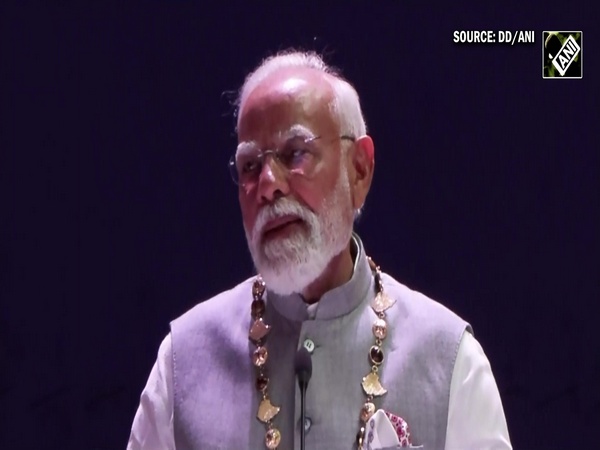Current account deficit financing to be easier after index inclusion: Chief Economic Advisor Nageswaran
Sep 22, 2023

New Delhi [India], September 22 : Chief Economic Advisor (CEA) V Anantha Nageswaran, delivered insights during a briefing today, shedding light on the promising future of India's bond market and its potential implications for the nation's economy.
Nageswaran began by highlighting the significance of the Indian government bond market, which stands as the third-largest among emerging economies, trailing only China and Brazil.
However, he underscored a key issue—foreign ownership of Indian government bonds is currently less than 2 per cent, which is notably lower compared to other emerging markets.
Nageswaran said, “The Indian government bond market is the third largest among emerging economies after China and Brazil. But we all know that the following ownership is currently less than 2 per cent, one of the lowest compared to other emerging markets”.
One of the key points Nageswaran emphasized was the potential for currency appreciation when index inclusion, particularly by JP Morgan, begins to occur.
Increased demand from investors for Indian government securities could stimulate a rise in the value of the Indian currency, the rupee.
This prospect comes as India's bond market is already performing well, boasting a reasonable cost of capital in relative terms.
“There is a potential for currency appreciation when the index inclusion (JP Morgan) starts to happen on the demand from investors for Indian government securities starts to rise. Indian bond market is already performing well and the cost of capital and relative terms is already very reasonable”, said CEA.
Nageswaran explained that this currency appreciation could have both positive and challenging outcomes.
While it signifies growing investor confidence and demand for Indian bonds, it also necessitates maintaining rupee competitiveness.
The CEA believes that as the index inclusion and investor demand rise, the cost of borrowing may decline further.
In terms of practical implications, private sector estimates suggest that India could potentially attract between USD 20 to USD 26 billion annually through this development.
“There is a potential for currency appreciation when the index inclusion starts to happen. When demand from investors start for Indian Government bonds, cost of borrowing may come down even further. Pvt sector estimates that India will get 20 to 26 billion dollar on annual basis”, said CEA Nageswaran.
Addressing the question of whether the sale of Indian government bonds will lead to rupee appreciation, Nageswaran pointed out the historical context.
During the period of 2003-2008, when capital inflows into India surged, demand for Indian government bonds in rupees naturally led to an increased demand for the rupee, potentially resulting in appreciation.
CEA Nageswaran said, “Between 2003-2008 eight when capital inflows into India surged and therefore, when there is a demand for investors to buy the Indian government bonds denominated in rupees, then naturally the demand for rupee will increase and everything else being equal that surely it will lead to a potential for rupees nominal appreciation”.
“So, that is both a positive and a challenge, because we have to make sure that the rupee stays competitive as well. So, in that sense, there is a potential for currency appreciation when the index inclusion starts to happen on the demand from investors for Indian government securities starts to rise”, added Nageswaran
The Finance Ministry welcomed JP Morgan's decision to include Indian government bonds in its emerging-market debt index, acknowledging it as a sign of confidence in India's potential, growth prospects, and macroeconomic and fiscal policies.
JPMorgan Chase and Co is set to include Indian government bonds in its benchmark emerging-market index beginning June 28, 2024. This inclusion is expected to provide India with more access to debt funds.
With India projected to have a maximum 10 per cent weightage in the Government Bond Index-Emerging Markets, this development underscores India's growing appeal to global investors and its status as one of the world's fastest-growing major economies.
This move comes at a time when global manufacturing giants are increasingly looking to establish a presence in India as part of their diversification strategy, reinforcing India's importance in the post-pandemic global economic landscape.

















